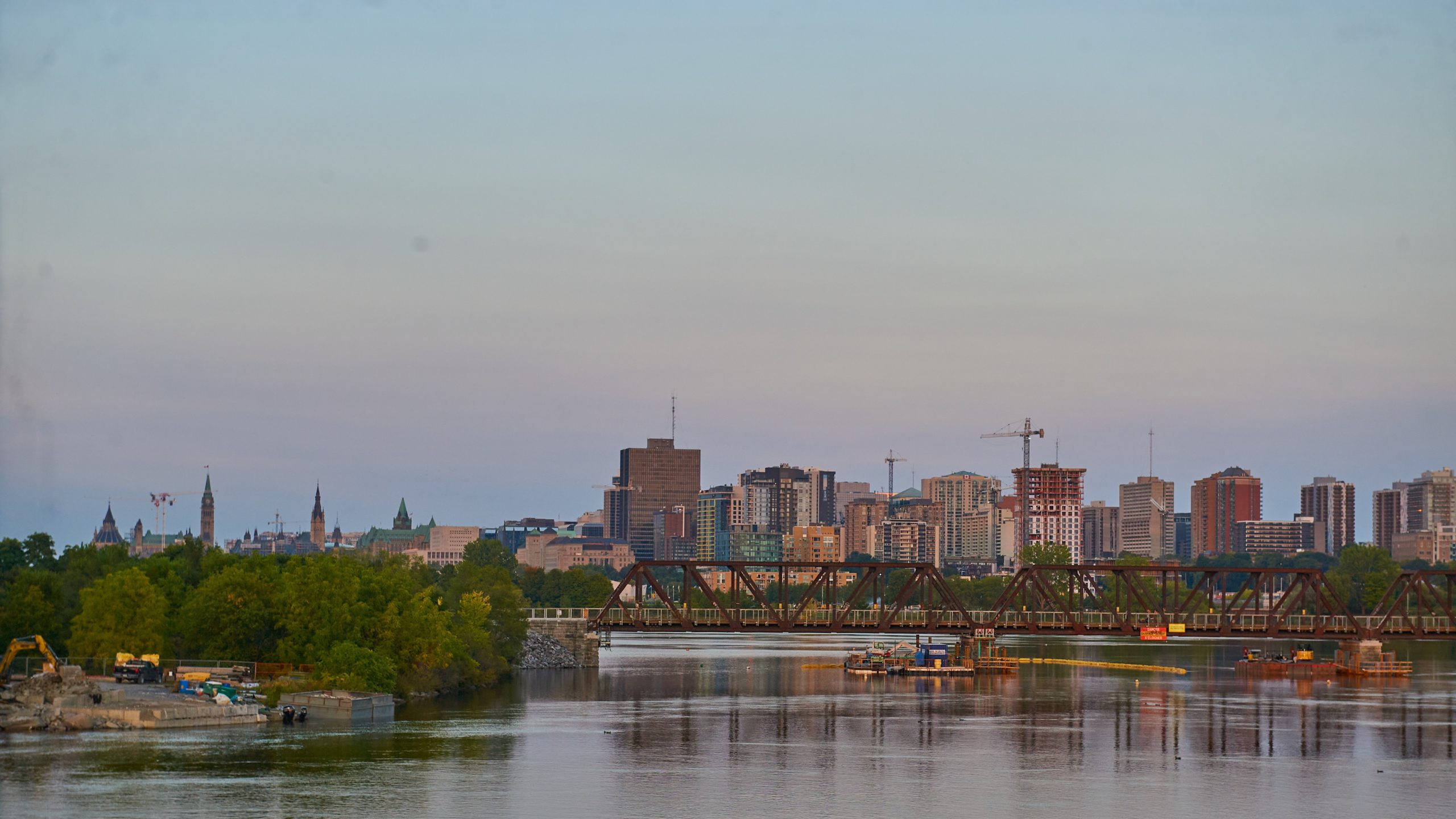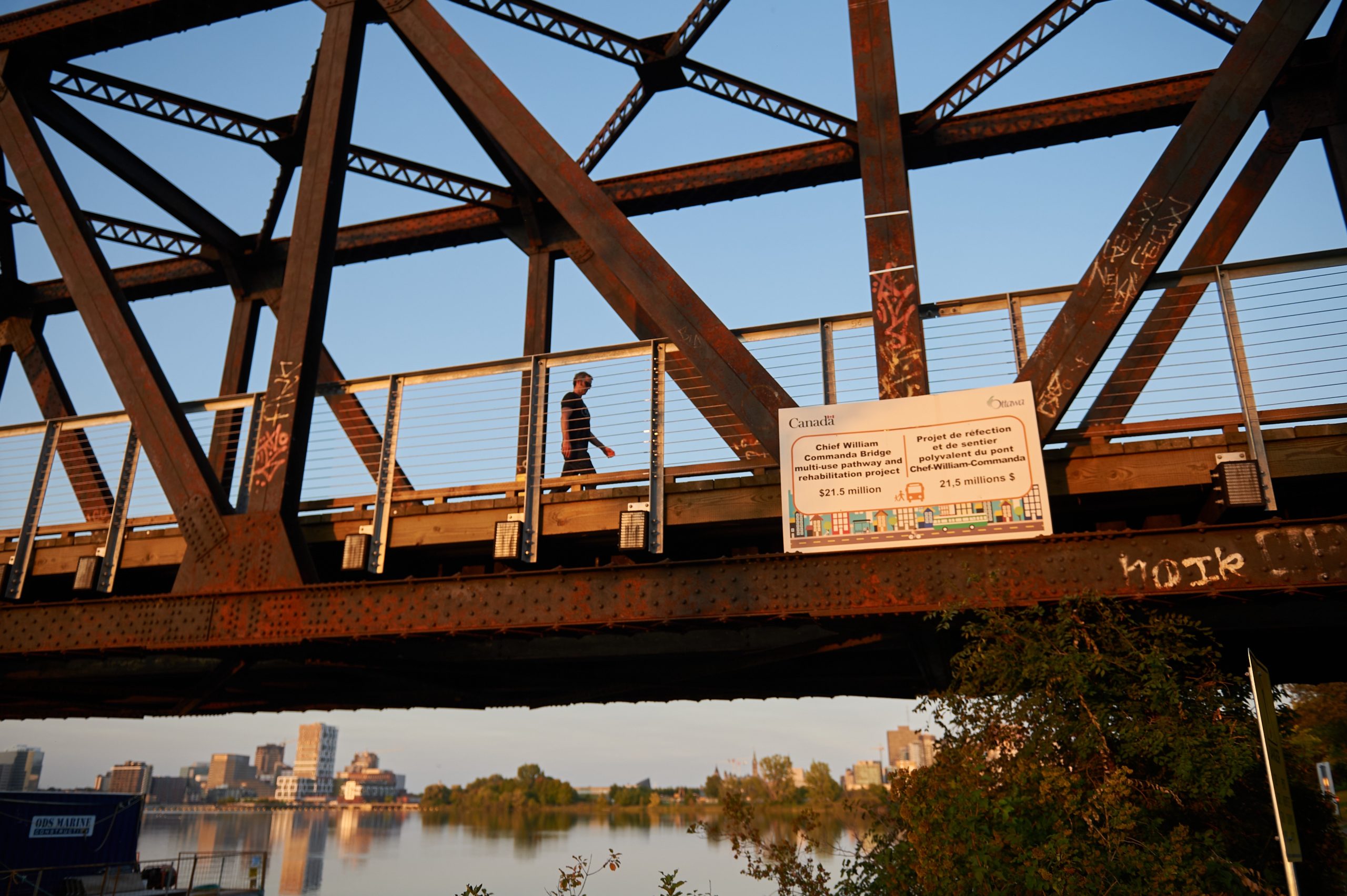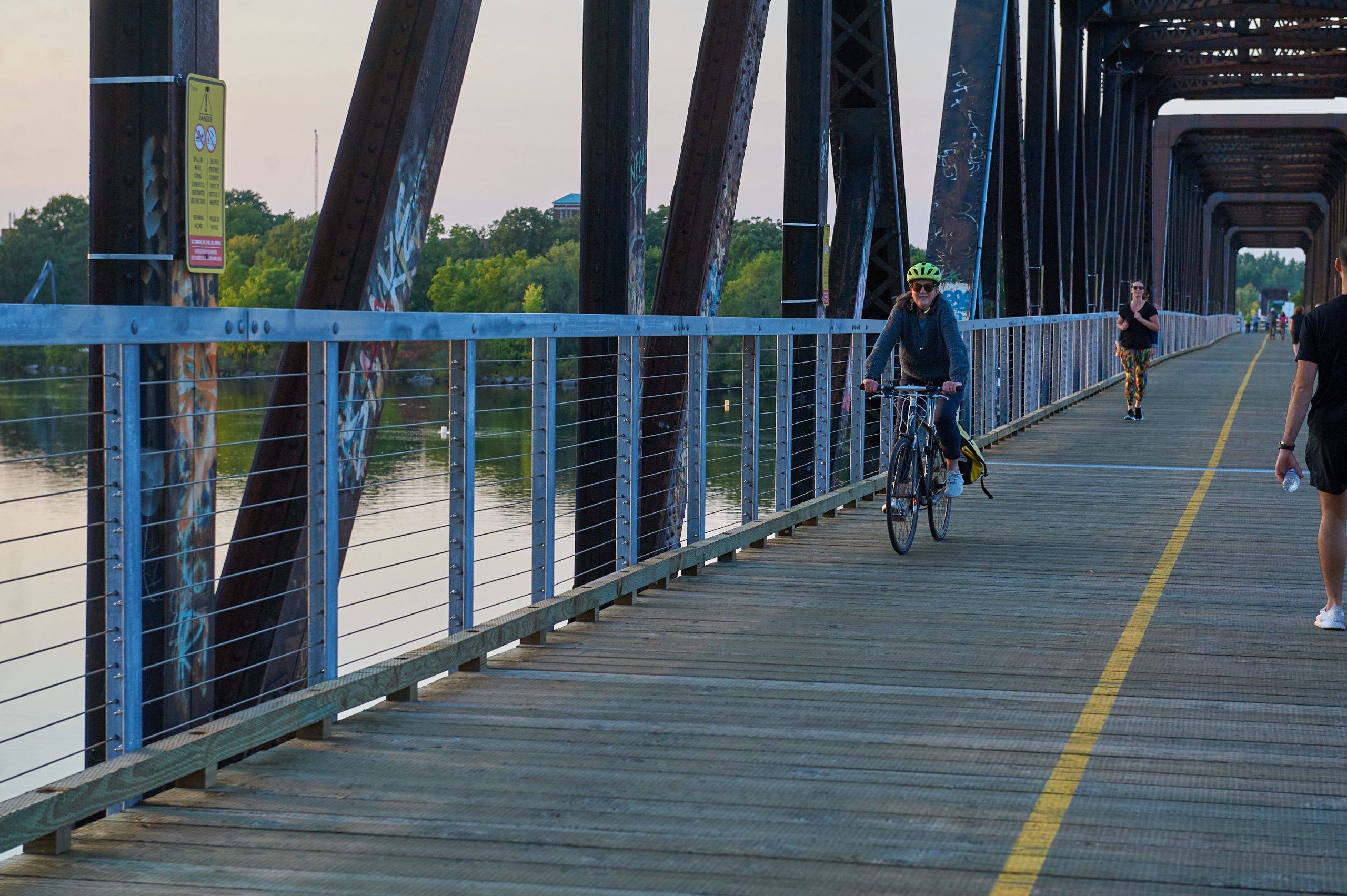The Chief Willam Commanda Bridge has officially opened and is already seeing large crowds.
After its first week in operation this August, almost 30,000 people crossed the former rail bridge by foot or bike, according to Ottawa mayor Mark Sutcliffe.
The 143-year-old bridge, named after William Commanda, an Algonquin elder who served as chief of Kitigan Zibi Anishinäbeg First Nation, had its official ribbon cutting on Sept. 9.
“This bridge embodies so much about what I love about our community, what I love about Ottawa,” Sutcliffe said during a ceremony on the bridge. “It connects communities, it connects Ottawa and Gatineau, it facilitates active transportation. It’s being enjoyed by cyclists and commuters and recreational users and runners and pedestrians and visitors and tourists.”
While the bridge is being welcomed by the public, it took a long time to get here.
Formally known as the Prince of Wales Bridge, the 1.3 kilometer connection from Ottawa to Gatineau was purchased by the City of Ottawa in 2005. It was left fenced off and abandoned for years but was a popular illegal hang out where several drownings occurred. There were talks of using the bridge as a transit network between Ontario and Quebec, but in 2021 it was agreed upon that it be converted into a pedestrian space instead.
The total cost for the project was $22.6 million.
“For all of the delays in getting it built, I think a lot of Ottawa has already seen that it was worth the wait,” Kitchissippi Coun. Jeff Leiper said. “The views from the bridge are spectacular, and some five and 10 kilometer running groups are now passing by the bridge. I’ve been using it as a way to get to city hall without having to share the road with cars. It’s really convenient.”

Honouring a legacy
While the bridge will provide a new way for residents to cross the Ottawa River, it is playing an even bigger role in recognizing the history of First Nations people who first called this land home.
Elder Claudette Commanda, who is Chief William Commanda’s granddaughter, said the bridge will act as a point of education to teach Canadians about the hardship First Nations peoples faced for centuries.
“We value the recognition of our late grandfather because he worked tirelessly to bring people together for racial justice and equality for First Nations people,” she told the Kitchissippi Times.
“It’s bridging people from one city to another, but it’s so fitting a bridge is named after our grandfather because he worked all his life as a bridge builder and bringing people together in the spirit of kindness and love,” she added.
Born on the Kitigan Zibi reserve in 1913, Chief William Commanda escaped the residential school system by hiding in a bush.
In the 1960s, William Commanda brought First Nations people and tribes from across North America together for a multi-day gathering called “The Circle of All Nations.” In 1991, he attended the Rio Earth Summit and pleaded with the Canadian government to return Chaudière Falls to its natural state. The site has been a sacred meeting place for Indigenous peoples through the ages.
“He was a champion as chief of our community even during the days when the Indian Act was applied to us very strictly by colonial laws and the power of the church and government over our people,” Commanda said. “Our freedoms were restricted but my grandfather stood very strongly against these adversaries. He reminded Canadians whose land this was. Despite our voices not being heard, he kept speaking the truth.”

Commanda said it’s important that Canadians learn the painful truths of their history to keep reconciliation going and to ensure the past doesn’t repeat itself.
“He believed in forgiveness and he also believed in order for Canada to heal, it had to be on the foundation and pillars of our knowledge,” she said. “It’s so important for all levels of government and people in general to work with our communities. They need to be at the table when decisions are made.”
Hintonburg resident Beth Greenhorn said the bridge will offer a new way for her to commute to her job at Library and Archives Canada in Gatineau. She’s worked there since 2013 and has focused much of her career around Indigenous files and reconciliation.
“It’s created an environmentally friendly connection between Ottawa and Gatineau. When the bridge was closed, I always thought it would be an amazing way to connect the two provinces,” she said. “I cycle to work as much as possible and I think it will save me some time there and back.”
Greenhorn said when she crosses the bridge, she reflects on the land’s Indigenous past and the legacy that’s left behind.
“Whenever I’m by the Ottawa River… I think of the past and how I’m a European settler living in what is now called Ottawa. But the Algonquins and Anishinabes peoples lived here for thousands of years before me,” she said.

